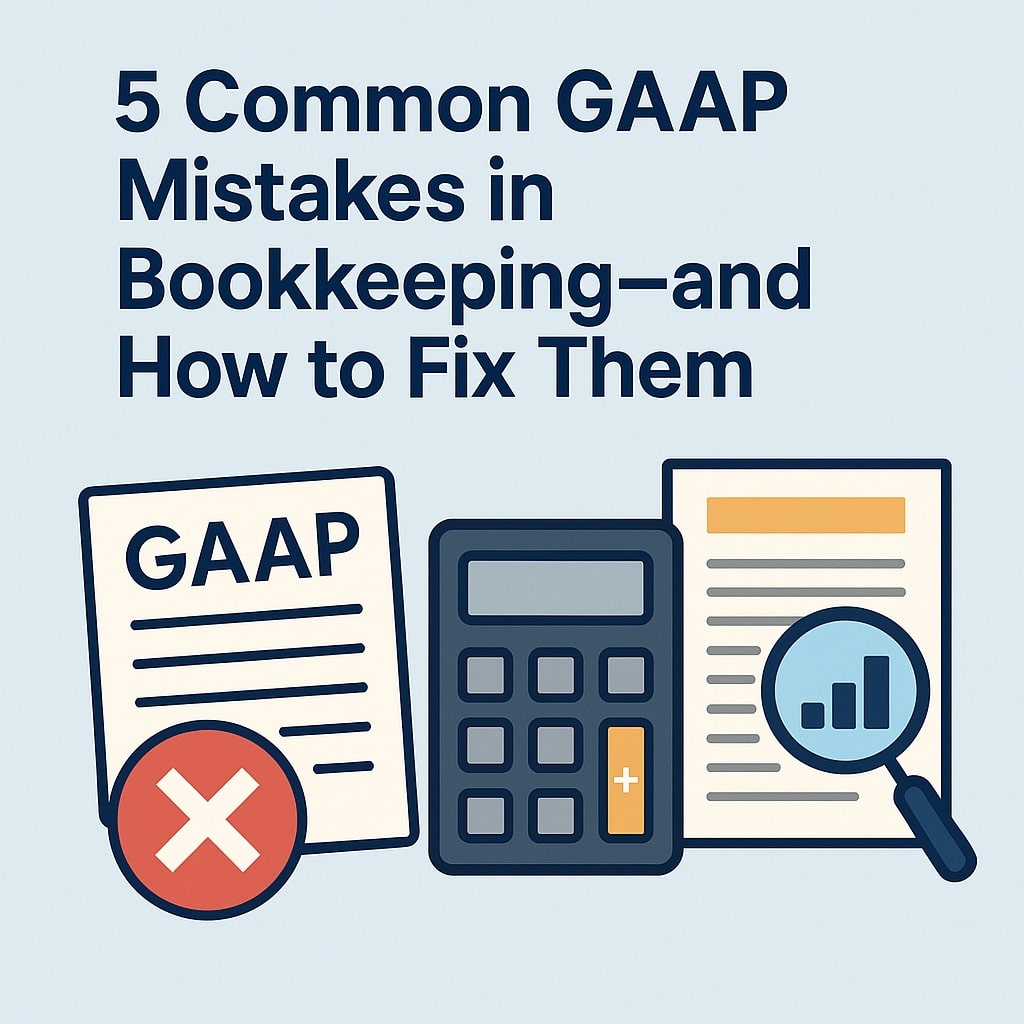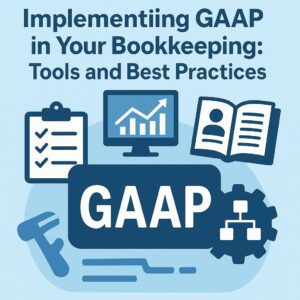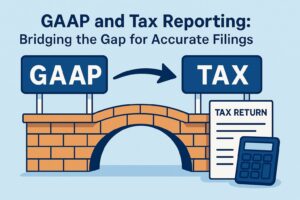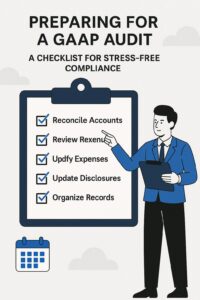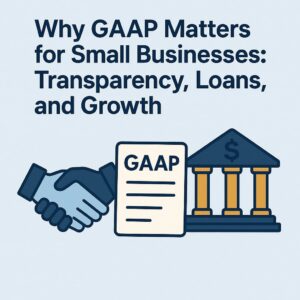Article 5: “5 Common GAAP Mistakes in Bookkeeping—and How to Fix Them”
(Meta Description: Avoid costly errors! Learn the 5 most common GAAP mistakes in bookkeeping, from revenue recognition errors to misclassified expenses, and how to resolve them quickly.)
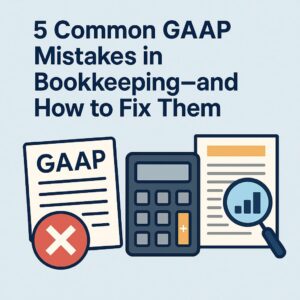
5 Common GAAP Mistakes in Bookkeeping—and How to Fix Them
Even seasoned bookkeepers can stumble over GAAP’s complexities. These mistakes not risk compliance but also distort financial health. In this article, we’ll highlight five frequent GAAP errors, explain their consequences, and provide step-by-step fixes to keep your books accurate and audit-ready.
Mistake 1: Incorrect Revenue Recognition
What Happens: Recognizing revenue before delivering goods/services (e.g., booking a deposit as income).
Consequences: Overstated profits, IRS audits, and investor distrust.
Fix:
Follow the 5-Step Revenue Recognition Model: Identify contracts, performance obligations, transaction price, allocate price, recognize revenue as obligations are met.
Use software like QuickBooks Advanced to automate compliance.
Mistake 2: Misclassified Expenses
What Happens: Labeling a capital expense (e.g., equipment) as an operating cost.
Consequences: Skewed profit margins and tax miscalculations.
Fix:
Create a Detailed Chart of Accounts: Separate “Office Supplies” (expense) from “Machinery” (asset).
Train staff on GAAP’s matching principle (e.g., depreciate assets over time).
Mistake 3: Ignoring Disclosure Requirements
What Happens: Failing to disclose contingent liabilities (e.g., lawsuits) in footnotes.
Consequences: Legal penalties and loss of stakeholder trust.
Fix:
Develop a Disclosure Checklist: Include leases, lawsuits, and related-party transactions.
Review FASB’s Disclosure Framework for updates.
Mistake 4: Mixing Cash and Accrual Accounting
What Happens: Recording some transactions in cash (e.g., expenses) and others in accrual (e.g., revenue).
Consequences: Incomparable financial statements and compliance failures.
Fix:
Stick to Accrual Accounting for GAAP compliance.
Use tools like Xero to convert cash-based records to accrual automatically.
Mistake 5: Overlooking Depreciation Schedules
What Happens: Not depreciating assets (e.g., vehicles, software) over their useful life.
Consequences: Inflated asset values and inaccurate net income.
Fix:
Apply Straight-Line Depreciation: (Cost – Salvage Value) / Useful Life.
Automate with Sage Intacct or similar software.
Proactive Steps to Avoid GAAP Errors
Monthly Reconciliation: Compare bank statements to ledger entries.
CPA Review: Have a certified accountant audit quarterly statements.
Continuous Training: Enroll in GAAP workshops (e.g., AICPA courses).
FAQs
Q: Can I correct GAAP errors retroactively?
A: Yes—restate prior financial statements and file an amended report.
Q: What’s the penalty for GAAP non-compliance?
A: Fines, loan denials, or delisting from stock exchanges (for public companies).
Final Thoughts
GAAP mistakes are preventable with vigilance, training, and automation. By addressing these errors early, you’ll safeguard your business’s credibility and financial accuracy.
(Word count: 1,300 | Keywords: GAAP mistakes, bookkeeping errors, revenue recognition)
